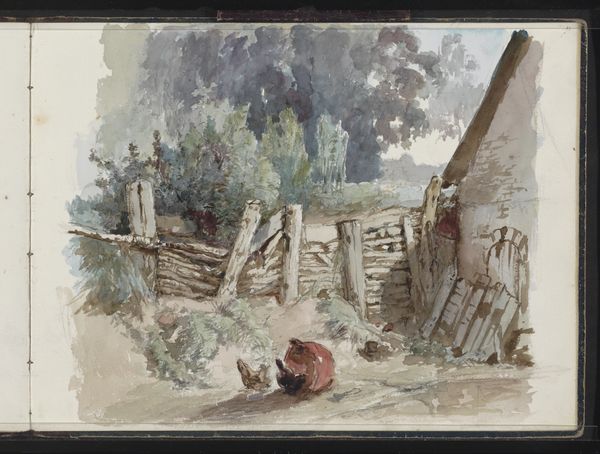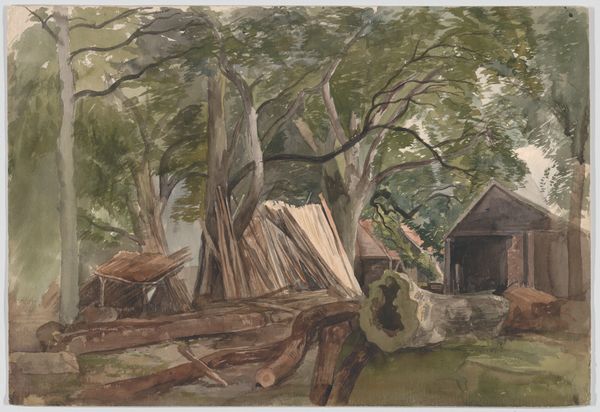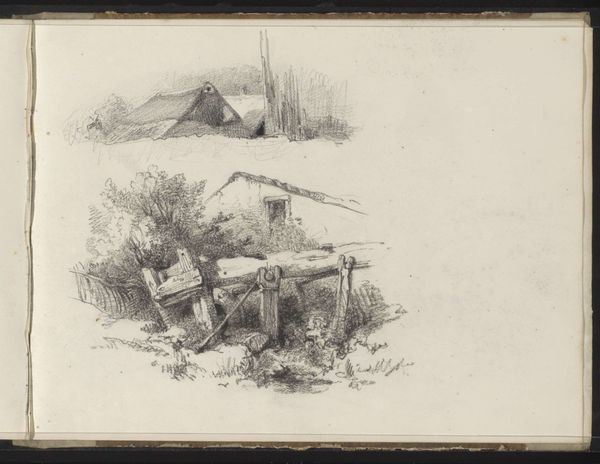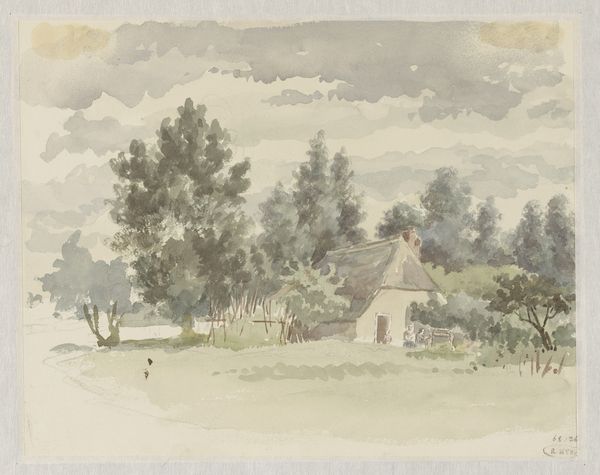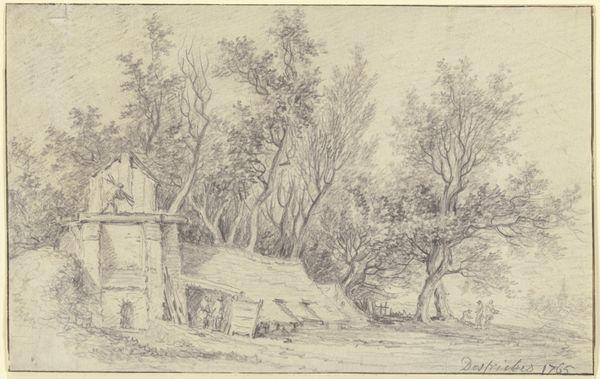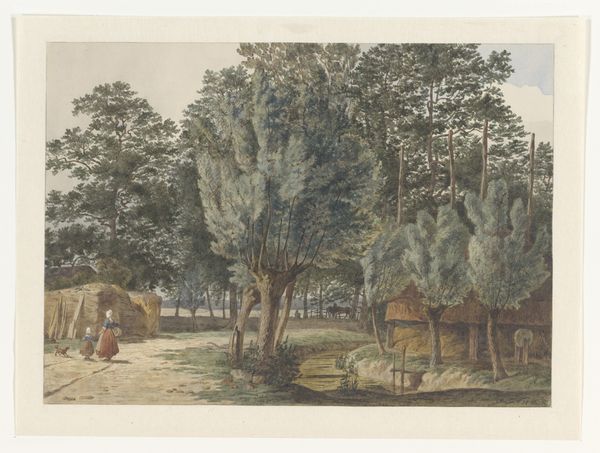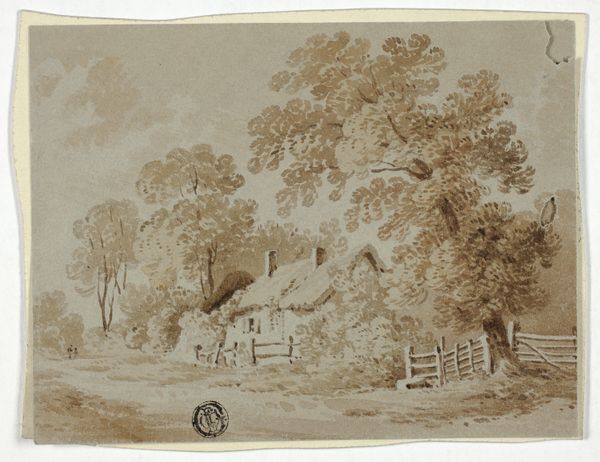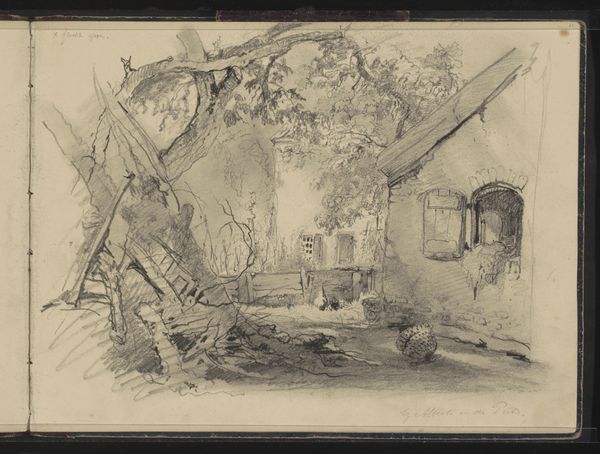
watercolor
#
landscape
#
oil painting
#
watercolor
#
romanticism
#
genre-painting
#
watercolor
Dimensions: 107 mm (height) x 179 mm (width) (bladmaal)
Editor: So, this is "Parti med sæterhytte," or "View of a Mountain Cottage," a watercolor by Martinus Rørbye from 1832. It's a rather quiet scene. A lone figure sits outside a wooden building, seemingly contemplating the landscape. What stands out to you? Curator: This image sings to me of the Romantic era's fascination with the solitary figure amidst nature. Notice how the cabin, likely a seasonal dwelling, sits on massive stones: a clear visual echo of ancient sites with spiritual import and the importance of shelter. Can you see how the ladder almost embraces the tree like arms? Editor: I see it now! There's a kind of harmony, like nature protecting the structure and the figure that occupies it. What about the choice of watercolor; does that contribute to this reading? Curator: Absolutely. Watercolor lends itself to a certain ethereal quality. Note the detail given to rendering nature with muted tones, a technique which invokes nostalgia, possibly connecting the viewer with a simpler way of life, before industry eroded nature’s perceived role in society. The Romantic period elevated common laborers into important symbols; consider the significance of the figure resting here, perhaps at day's end. How do you interpret their posture? Editor: He does seem relaxed. Almost melancholic, or simply pensive, and very still. As if absorbed into the scene as much as the cottage and the surrounding hills. Curator: Exactly. This image reminds us how potent and comforting these places could be, as well as the need to preserve them. The work is a celebration of nature as refuge, still present today as we see modern life. Editor: I had not realized the deep-rooted connections between romantic art, nature, and people! This sheds a new light on this work, giving depth to what seems to be a modest watercolor sketch.
Comments
No comments
Be the first to comment and join the conversation on the ultimate creative platform.

